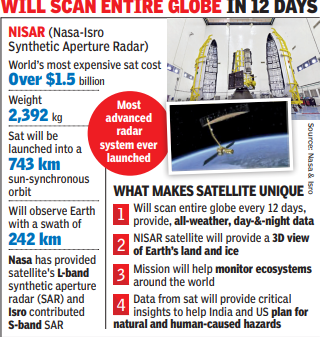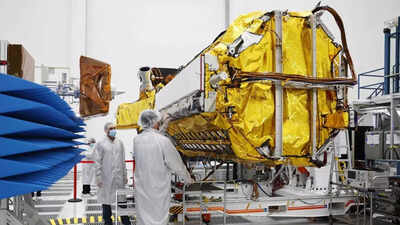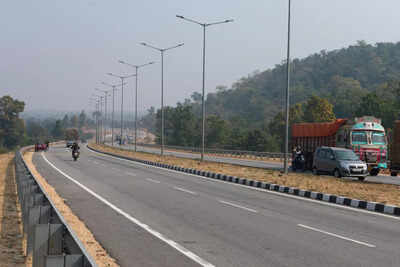NEW DELHI: The world’s most expensive earth observation satellite, NISAR, which has been jointly developed by Nasa and Isro, will be launched after much delay from the Sriharikota spaceport at 5.40pm on July 30, the Indian space agency has said. Both India and the US have been working on the Nasa-Isro SAR Mission (NISAR) for over a decade and it has cost them over $1.5 billion.“Historic Launch Ahead… NISAR will scan the entire globe every 12 days, providing high-resolution, all-weather, day-and-night data. It can detect even subtle changes in Earth’s surface like ground deformation, ice sheet shifts, and vegetation dynamics,” Isro posted on X.Speaking to TOI on Tuesday, space minister Jitendra Singh said, “NISAR will open a new horizon in Indo-US collaboration. The satellite will take images of every piece of Earth. It will not only have scientific applications but also provide new earth science”.

The minister, who wanted to witness the crucial launch but may not be able to go to Sriharikota due to Parliament being in session, said that “crucial data generated from NISAR will, besides being beneficial for the US and India, help other countries in disaster management. Thus, it will live up to PM Modi’s dream of Bharat playing the role of Vishwa Bandhu.”India’s GSLV-F16 rocket will inject the satellite into a 743-km sun-synchronous orbit with an inclination of 98.4 degrees. NISAR will observe Earth with a swath of 242 km and high spatial resolution, using SweepSAR technology for the first time. The satellite, weighing 2,392 kg, will be the first one to observe the Earth with a dual frequency synthetic aperture radar, with one each provided by Isro (S-band) and Nasa (L-band). The NISAR mission is designed to observe and measure some of the planet’s most complex natural processes, including ecosystem disturbances and natural hazards like quakes, tsunamis, volcanoes and landslides.






